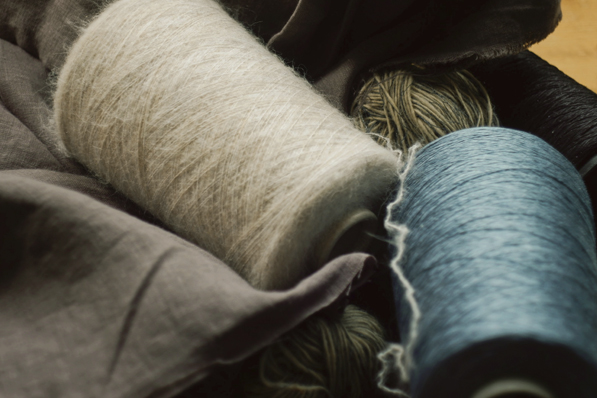Yellow Orange China 300D/96F Dty Polyester Yarn Eco-friendly Recycle Dty Yarn Fo...
See DetailsThe process of semi-worsted yarn is an important part of spinning production, and its research is to better develop a semi-worsted yarn process suitable for market demand. This article will analyze the color difference problem according to the actual situation of production practice, and propose optimized control measures based on raw material selection, production process technology, etc., in order to better avoid the problem of dyeing defects.
Yarn chromatic aberration is an important indicator for evaluating the quality of yarn, and it is also a major focus for cotton spinning companies to check the quality of products in the production process. Semi-worsted spinning belongs to the category of colored spinning, and its color spectrum and color fastness are better, and the hairiness is also less, because the addition of new functional fibers has made this product more popular. However, many customers will complain about the color difference of semi-worsted yarn, which is also a major technical problem for semi-worsted yarn. Usually, this problem is mainly manifested in the color file of garment woven pieces; the color point and color particles; the color difference between batches of samples and large goods, and the same color number. The reasons for these color differences are mainly due to the unreasonable cotton blending process; the uneven cotton blending process is not uniform; each process is not guaranteed to be spun ; the twist difference between the long segment caused by the difference in spindle speed and the short segment caused by the sliver. Therefore, it is necessary to have a clear understanding of these problems and their causes in color difference control.

Strengthen operation management
1. It is necessary to scientifically formulate specific rules and regulations to prevent the occurrence of color difference, so that all employees, especially the car drivers who clean, comb, and process must pay great attention to the importance of avoiding color difference.
2. If the color is mixed by drawing, the feeding position of different color strips should be fixed. Generally, the color strips are arranged alternately, so that the longitudinal color fibers of the yarn are evenly distributed, and the fabric performance is not easy to show color stripes. Therefore, except for some fabrics that have special requirements for the formation of yarn, generally the color bars should be arranged alternately. But no matter how it is arranged, the feeding position in production will be fixed once it is scheduled. In order to fix the feeding position, in addition to stipulating that the blocker must be connected with the same color strip when changing the cylinder, the guide bar horn is often marked with color paint to facilitate inspection.
3. In order to grasp the production dynamics in time, a certain number of bobbins should be randomly selected every day in combination with the yarn evaluation. In addition to the inspection of physical indicators, the colorimetry should be compared, and the differences should be dealt with in time. At the same time, one bobbin is taken from it every day, and compared with the previous sample, in order to judge whether there is a color difference between multiple batches of yarn before and after. In this way, problems can be discovered early, and measures can be taken as early as possible to avoid flowing into the next process. In combination with the "color series standard samples" during the on-site analysis, confirm how much the color fiber causing the color difference has changed, thereby helping to find the cause of the color difference.